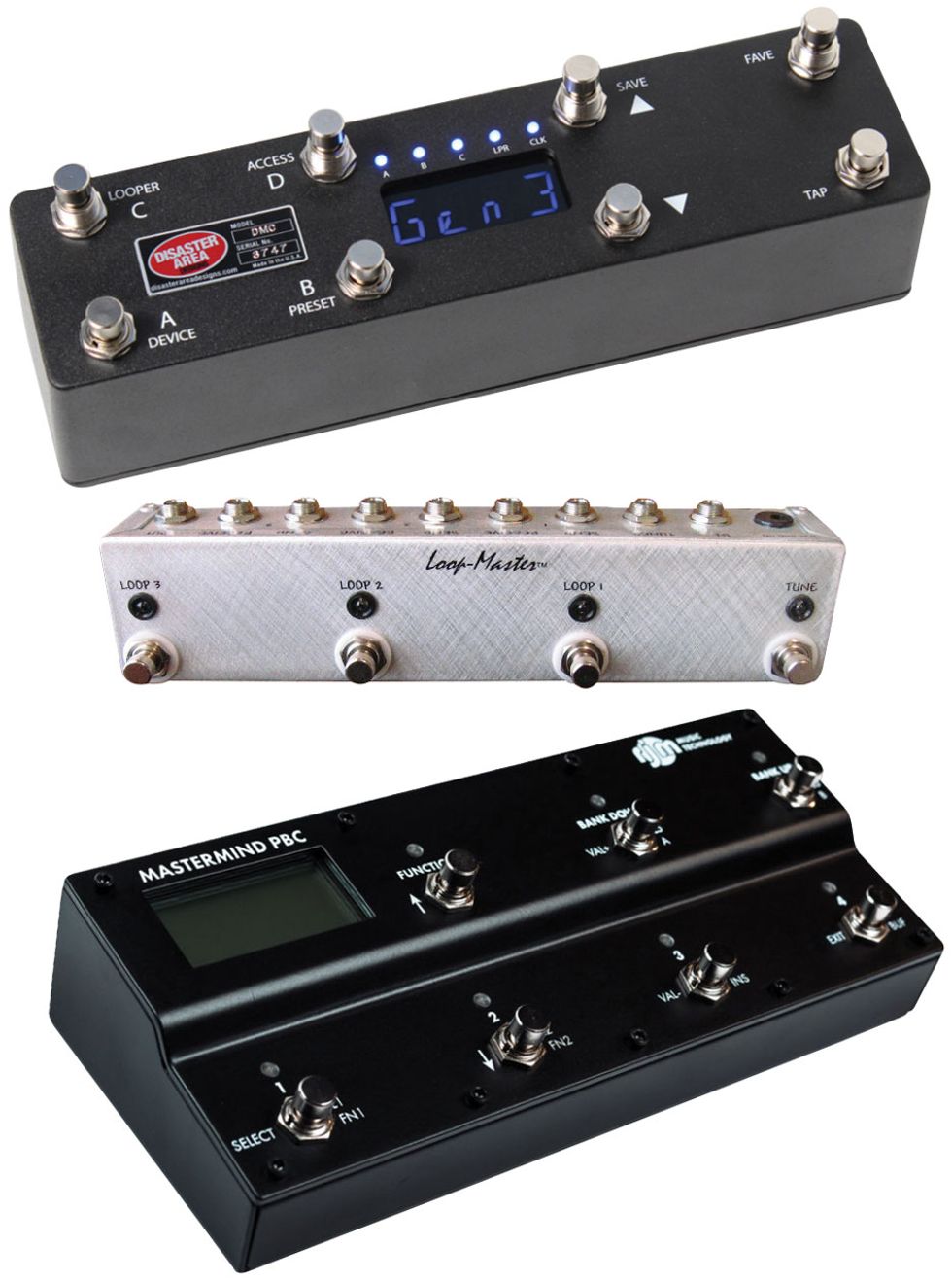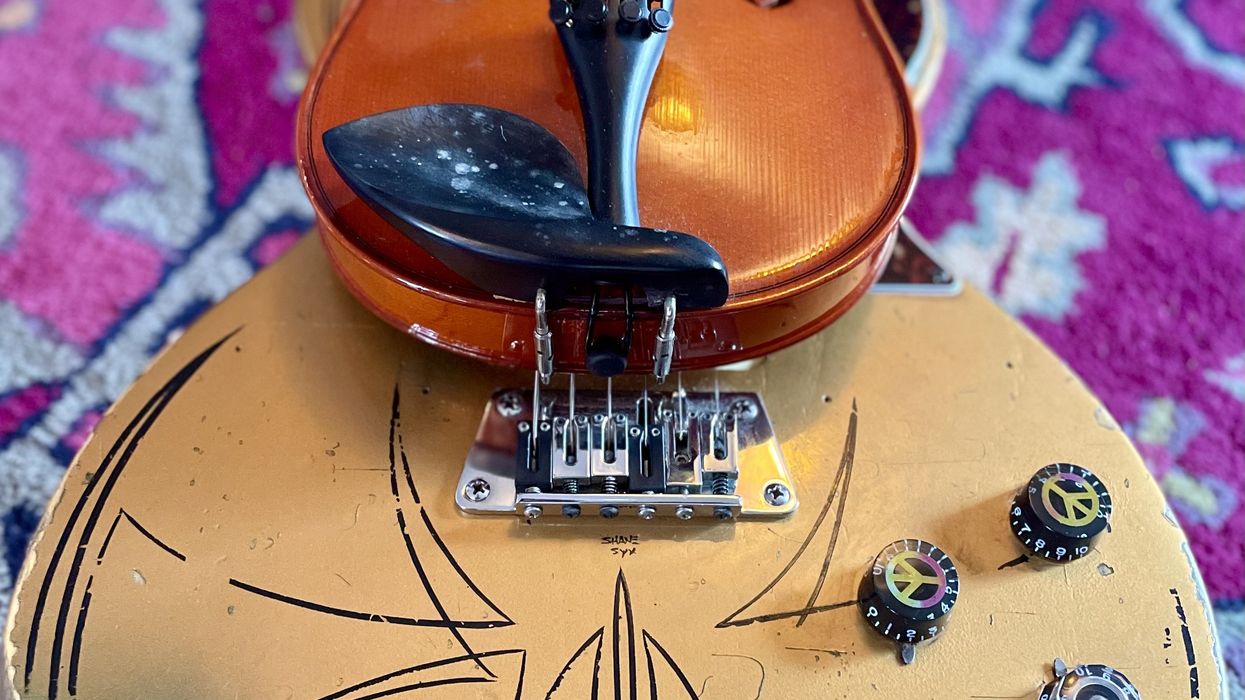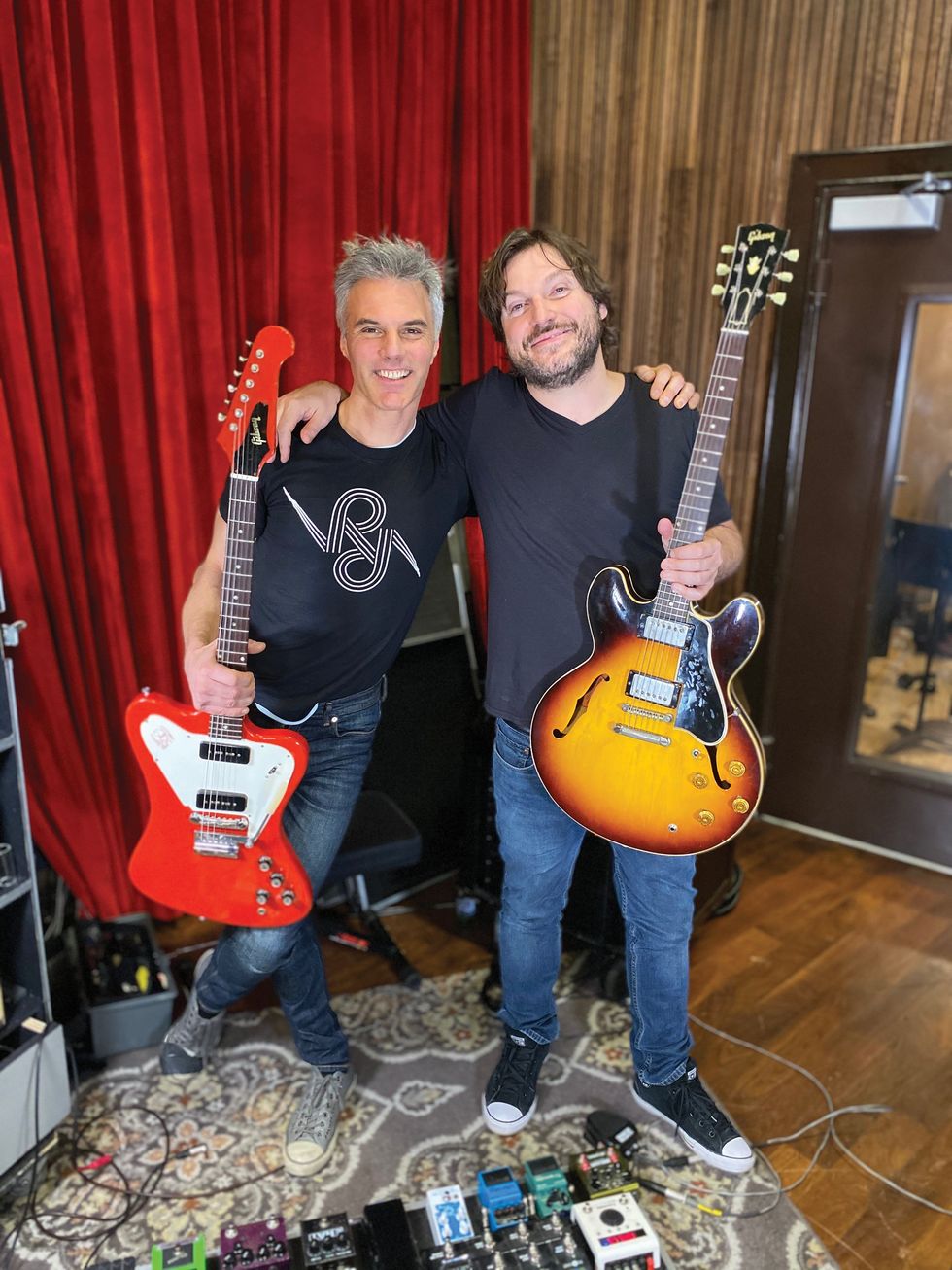When helping clients design their ideal pedalboards, we try to answer a series of “Five W”-inspired questions. The “who” is easy enough—that’s you. The “why” usually involves sounding awesome, but sometimes includes impressing guitar-playing friends and/or compensating for not practicing enough. The “what” is all those pedals you’ve bought, burgled, or bartered for. The “how” is critical but often unclear. A given set of pedals can be arranged in countless ways to satisfy the same number of players, and when it comes to working with the pedalboard, whether or not you use a loop switcher fundamentally affects that arrangement.
A loop switcher is a device that houses pairs of send and receive ports (the loops) that send signal to and receive signal from each one of your pedals, allowing remote control of whether that pedal is in or out of your signal flow. You can typically activate each of those loops with a footswitch, but some loop switchers forego the stomps for a collection of relays controlled by MIDI or some other protocol.
Players often ask if their rig should have a loop switcher. There isn’t a hard-and-fast answer, but carefully weighing the benefits and pitfalls can help you determine whether a switcher is right for your rig. Here are preconceptions about loop switchers to consider.
• A loop switcher will give me the ability to have presets and instant access to any combination of pedals.
Many loop switchers do allow this. RJM, Boss, and Disaster Area all make preset-able switchers. Presets make showtime simpler by avoiding multiple button presses for each song cue, but you will need to spend time in pre-production setting up your presets to serve your sounds, songs, and setlist.
• A loop switcher will preserve my tone by true-bypassing each pedal and its tone-sucking connecting cables.
A true-bypass type switcher will negate pedals with poor bypass schemes, and eliminate the capacitive losses caused by cables connecting the pedal to the looper. A potential issue arises when you’re running multiple pedals. In a non-loop switcher pedalboard, the pedals are joined with a series of short cables. With a loop switcher, your average cable length increases since each pedal has a discrete connection to the switcher. When engaging multiple pedals, you might run through more cable than you otherwise would, and have additional capacitive load via the loop’s switching elements and jacks.
• A loop switcher will make my rig more reliable by allowing me to “remove” failing pedals and cables from my signal flow.
If a cable shorts or pedal smokes, the damage can be excised with a bypassed loop. If you have pedals that are prone to misbehaving, a true-bypass loop switcher can remove them instantly. That said, it is worth noting that the likely things to fail in a typical pedal are its footswitch and jacks, and many loop switchers are, at their core, a collection of footswitches and jacks. A solidly built product will serve you well, but don’t let it lull you into a false sense of security.
Unfortunately, loop switchers will increase the size and cost of your build. Not only do you need to purchase the switcher (they range from a little over $100 to a little under $1,000, depending on size and functions), but you’re essentially doubling the amount of cables needed to connect your pedals to that looper. You’ll also need room on the board for the switcher and the cable and plugs that must connect to it. On the positive side, a loop switcher can greatly improve your workflow. In the middle of a breakneck show or high-pressure session, it can be tricky to quickly discern the state of a large pedalboard. When there’s a myriad of devices spread over a large area, it is entirely possible to miss that a pedal is on when it should be off, or vice versa. A loop switcher can give you a simple way to survey your kingdom and quickly ascertain what is engaged and what isn’t.
Is a loop switcher the best thing for your rig? That depends on a lot of factors: Tally the pluses and minuses above as you consider whether a loop switcher will enhance your next build.












![Rig Rundown: Russian Circles’ Mike Sullivan [2025]](https://www.premierguitar.com/media-library/youtube.jpg?id=62303631&width=1245&height=700&quality=70&coordinates=0%2C0%2C0%2C0)






